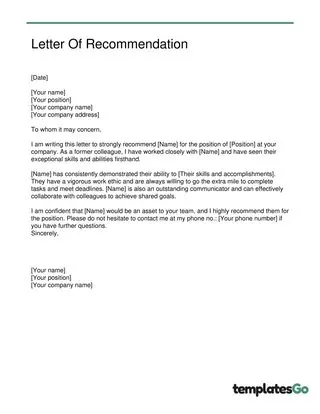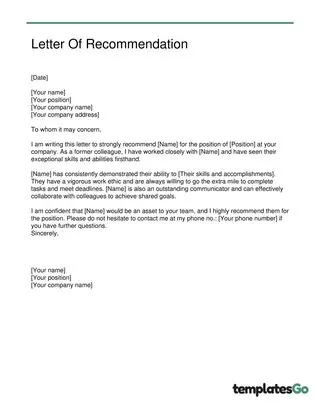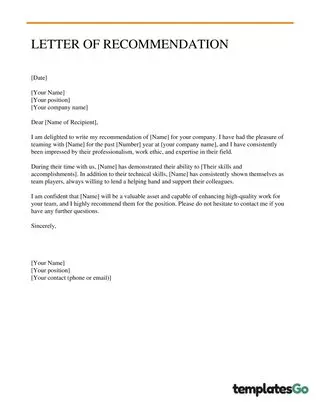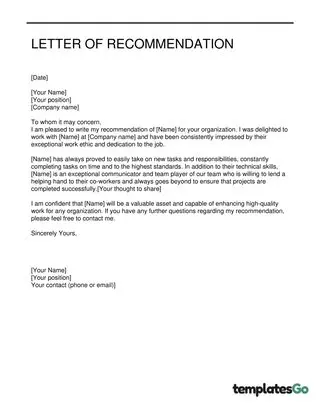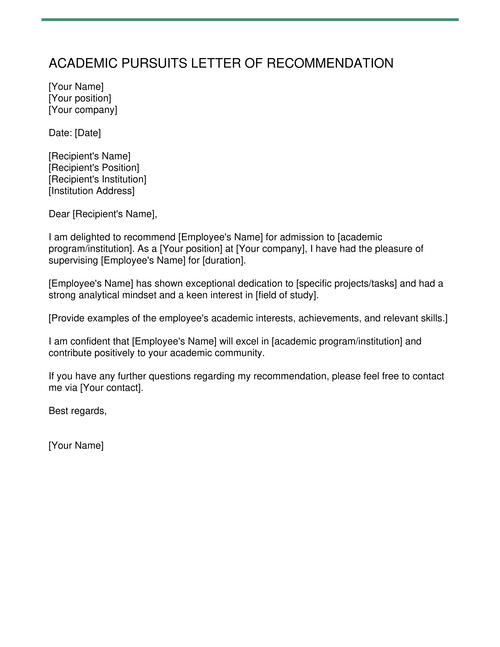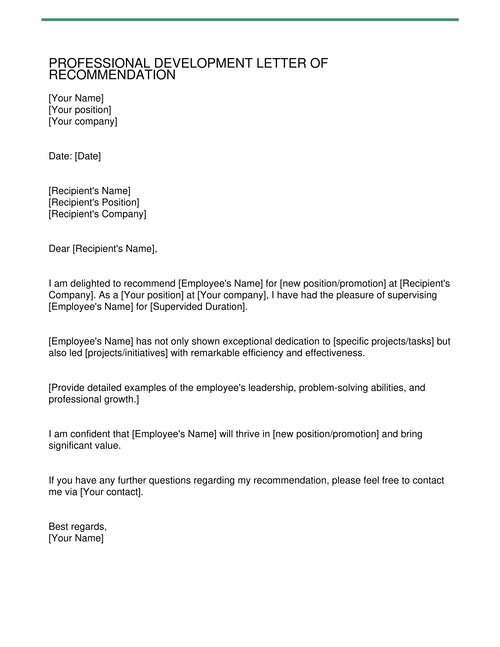What Is A Recommendation Letter For An Employee?
A Recommendation Letter which is often referred to as a reference letter, can be defined as a document which is requested and written by a former employer for a previous employee who is seeking employment from a different company. A Recommendation Letter can be requested by any potential employer in order to get a better understanding of the potential employees work habits, ethics and to gain evidence of work performance.
Furthermore, a letter of recommendation for an employee is important because it highlights the skills, abilities, and accomplishments of the employee and provides an endorsement of their job performance. This letter is therefore deemed to be an extremely valuable tool for employees who are seeking a new job or promotion and can be written by professional contacts such as current or former supervisor, manager, colleague, or client.
Why Employees May Ask Human Resources for a Letter of Recommendation?
Professionals working in the HR department can be asked by a formal or current employee for a letter of recommendation because HR professionals often have easy access to different departmental colleagues and managers within the organization. Due to this, HR professionals are often in the best position to get a complete picture of a former employee's work performance and ethical background.
If you are working in a managerial or supervisory position, it is important to note that you can ask HR professionals for guidance in relation to different recommendations or reference letters and what you should include.
Different Letter of Recommendation for Employee Classification
It is easy for a former employer to write a recommendation letter but knowing the different types of recommendation letters which an employer can write for an employee is equally important. There are currently four recommendation letters that can be written which include:
Professional Recommendation Letter: A professional recommendation letter often referred to as an employment reference letter, is a written letter which provides an evaluation of the employee’s work performance, skills, qualifications, and work-related accomplishments. Furthermore, a professional recommendation letter is a letter which can be written by an individual’s professional contacts which can include the employee’s direct managers or supervisors, work colleagues or HR professionals who have worked with or had first-hand experience of the former employee’s performance. This letter is often only required by hiring managers who want the potential employee’s abilities to be endorsed for validity purposes.
Simple Recommendation Letter: A simple recommendation letter can be used for various reasons, such as there being no need to write a professional recommendation letter due to the nature of the position in which the former employee is seeking employment. If an HR professional was requested to write the recommendation letter, but the employees’ performance within the duration that they were working for the organization was not worth endorsing or if the formal employee’s values and abilities were highly lacking as per the job performance records etc.
Character Recommendation Letter: Formally referred to as a personal recommendation letter, a character recommendation letter is one of the most written recommendation letters because it validates the employee’s personal qualities, character and values. A character recommendation letter is often written by the individuals’ personal acquaintances as opposed to a professional or normal recommendation letter which is written by the individual's professional contacts.
Recommendation Letter for Promotion: This is an internally generated employee approval letter which is written by a colleague to back their fellow employee for a promotion, a manager, or a supervisor. A Recommendation Letter for promotion could also come from a team member within the department who has recognized the recommended employees’ skills and contributions to the team, and they believe that the employee is worthy of a promotion.
How To Format A Recommendation Letter
In order to write the best letter of recommendation for an employee, it is crucial to be knowledgeable about the employee's work history and achievements. For a formal employer to further assist a former employee, it is advised that specific samples related to how the employee excelled in their previous role is provided.
Before writing this letter, we suggest a few things to do:
- Take your time to think about your specific experiences with that person.
- Write down their characteristics, skills, and achievements.
- Check out our example list in order to gain ideas and make a draft.
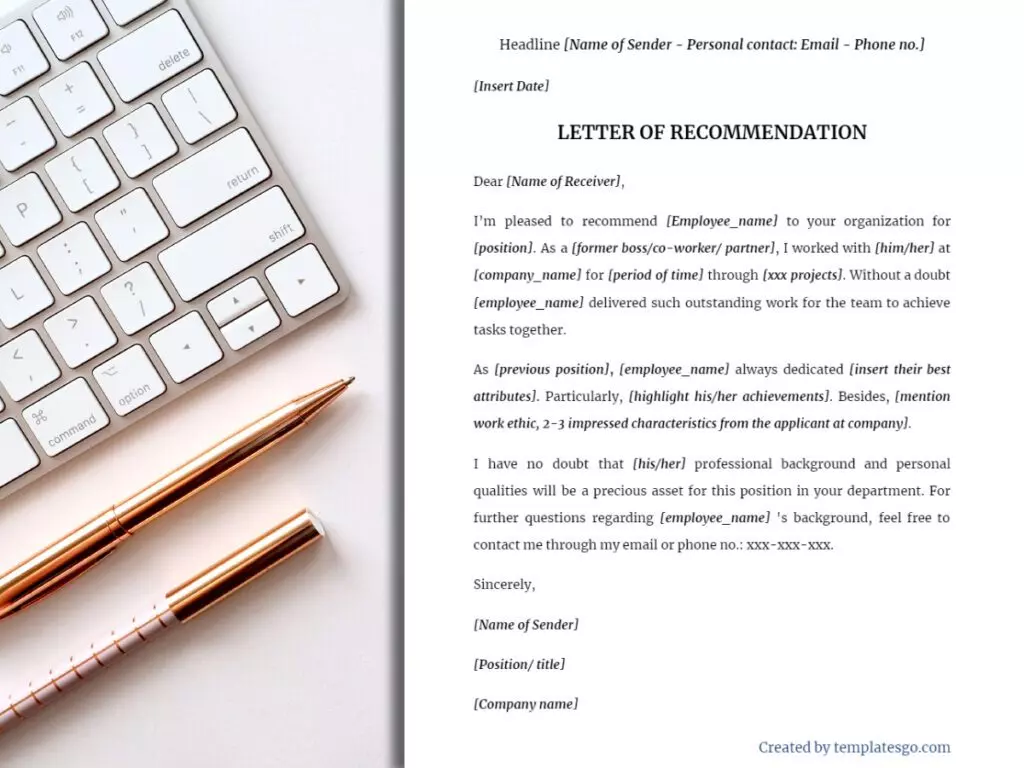
Once you have your outline ready in a Word file, follow these steps to personalize your letter of recommendation for the employee:
Choose a Professional Format
In the case that you are writing a professional recommendation letter as opposed to a character letter of recommendation, as an employer you need to make sure that all important details are noted within the letter. According to formal format, you must include Your Name, Your Contact Information, Company Name Address, City, State Zip Code and Date from the beginning of this letter, left on the top.
Always Make Sure To Greet The Receiver
Before writing the body, you need to greet the recipient of the letter and this greeting is often referred to as salutations and it comes after the header. For formatting and structure purposes, the one writing the recommendation letter for an employee is often required to skip a line after the header and then stating their greetings. For example, Dear Mr./Mrs./Ms. “Name of the desired recipient.” If the name of the receiver is not mentioned, you can indicate the phrase “To whom it may concern,”
The Body of The Letter of Recommendation for Employee
Within the body of any recommendation letter, they are certain key takeaways which need to be included. Everything which needs to be included in the body has been specified below.
- Explain why you are qualified to write the letter of recommendation for the employee, in order to lay the foundation for candidacy credibility. You can do this by mentioning your relationship with the person you are recommending (how long you've known them, where you met, why you think they're perfect for the available position).
- Describe your observations and evaluations of the candidate’s work which may include but are not limited to what is the employee’s best qualities, skills, work ethic and accomplishments. Emphasize why they are qualified for the position and detail their outstanding achievements. This is a very crucial step as it helps the reader understand whether the potential employee will be well suited for the position and if they will fit in the organization's culture.
- Make use of examples by illustrating the employees’ qualities and skills which you noticed during a specific work task or project.
- Finally, you should conclude the letter with a formal closing. This can be done by reaffirming why you're vouching for the applicant by using phrases like "highly recommended" or "I strongly believe" to highlight why this candidate is suited for that position.
- Add personal information to validate the recommendation letter by stating your full name, job title, and signature.
- Proofread the document to make sure that they are no errors because that is an indication of unprofessionalism and removes the credibility of the recommendation letter.
Tips to TakeAways
- Always make sure that all background information and any role at hand is acquired from the employee who requested a recommendation letter. By doing this, the employee will make it easier for the writer to write a valid letter of recommendation.
- The letter of recommendation for the employee should be kept simple, and employers should be honest about what they felt and experienced with their former employee.
- If you as a manager or supervisor are uncomfortable writing a letter of recommendation. It is better to politely decline and tell your former employee to notify their new HR department to call you instead if they require further information.
- The letter should be written in a professional, positive tone that concisely assesses the employee's abilities and potential.
- While writing a recommendation letter for an employee, we recommend that your letter is about one page in length.
- Using any of the templates which we have provided allows our clients to build a useful recommendation letter library. These templates can be utilized to educate supervisors, managers, and other colleagues on how to write powerful and excellent recommendation letters.
- Lastly, do a spell check and correct grammar before sending.
Free Editable Templates letter of recommendation for employee
If you do not have time to spend on writing a professional recommendation letter, use our editable templates to advance your work with only three simple steps:
- Select one of our templates to edit.
- Fill in your text by answering our simple questionnaire.
- Then review and download your letter in a professional format, ready to use.
Letter Of Recommendation Template For Employee
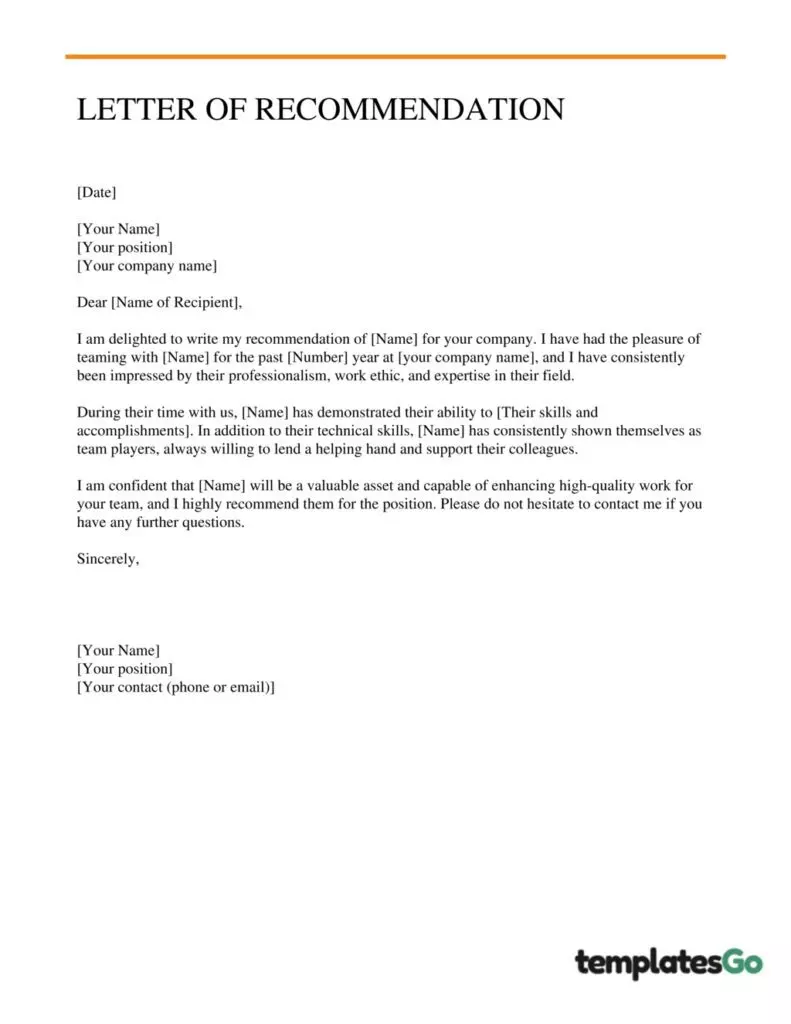
Strong Recommendation Letter For Employee Template
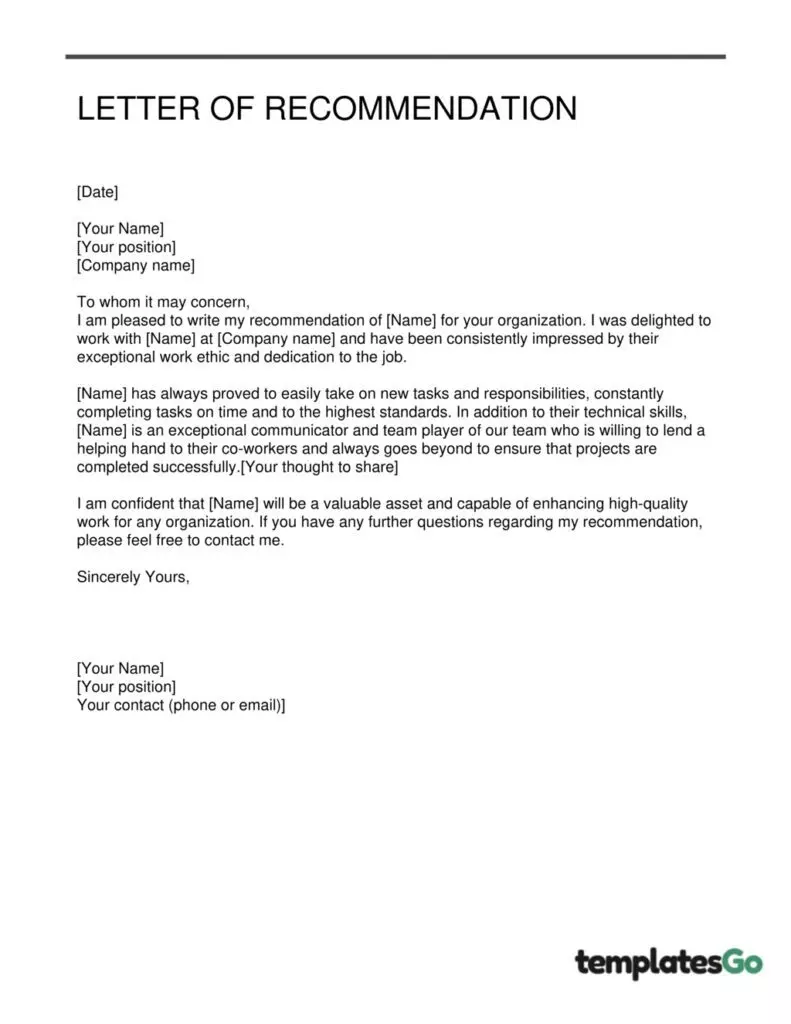
Legal Considerations When Writing a Recommendation Letter
According to a statement by Wolters Kluwer, a global provider of professional information, "Employment references are a tricky area that almost every employer must navigate at some point" (Wolters Kluwer, 🔗Balancing Requirements and Restrictions When Providing Employment References). It means that you need to take note and consider certain legal considerations when writing a recommendation letter in order to make sure that the process is fair, valid, complies with the companies’ terms and conditions and will not subject the organization nor the writer to any liabilities.
In order to minimize the risks of any legal actions being taken against the organization or the writer, it’s important for HR professionals to make all members of management, and other colleagues aware of the following terms outlined below:
- Deformation: This occurs when an individual believes that a false statement has been made against them which can possibly damage their reputation hindering them from gaining future employment. It’s important for all organizations to know that individuals can sue both an organization and a colleague on the grounds of defamation of character.
- Discrimination: A majority of countries worldwide have their own laws and regulations to protect employees in the workplace such as unions, government employment acts etc. Therefore, it is important for an organization to always state the types of protection which the organization offers to the employee, which should be noted in all 🔗employment contracts. An individual can be discriminated against due to race, gender, disability, religious beliefs, age, country of origin and veterinary status.
How Organizations Can Minimize Legal Risk When Recommendation Letters Have Been Requested?
- Legal departments should be consulted before and after a recommendation letter for an employee has been written.
- Managers and supervisors should be educated regarding all legal implications which can occur after a recommendation letter is written and should include risks of discrimination and deformation.
- Clear policies and guidelines for writing a recommendation letter as per the classification, should be developed.
- Make sure that your organization has an open communication culture between managers of every department and the HR department.
- Permit the HR professionals to review letter of recommendation drafts.
Conclusion
In conclusion, writing a letter of recommendation for an employee requires careful consideration of the employee's skills, accomplishments, and potential. It is important to highlight specific examples of the employee's abilities and achievements, as well as provide an overall positive assessment of their performance. By giving particular and glowing praise, the letter of recommendation can serve as a powerful tool in helping the employee secure their desired position.

